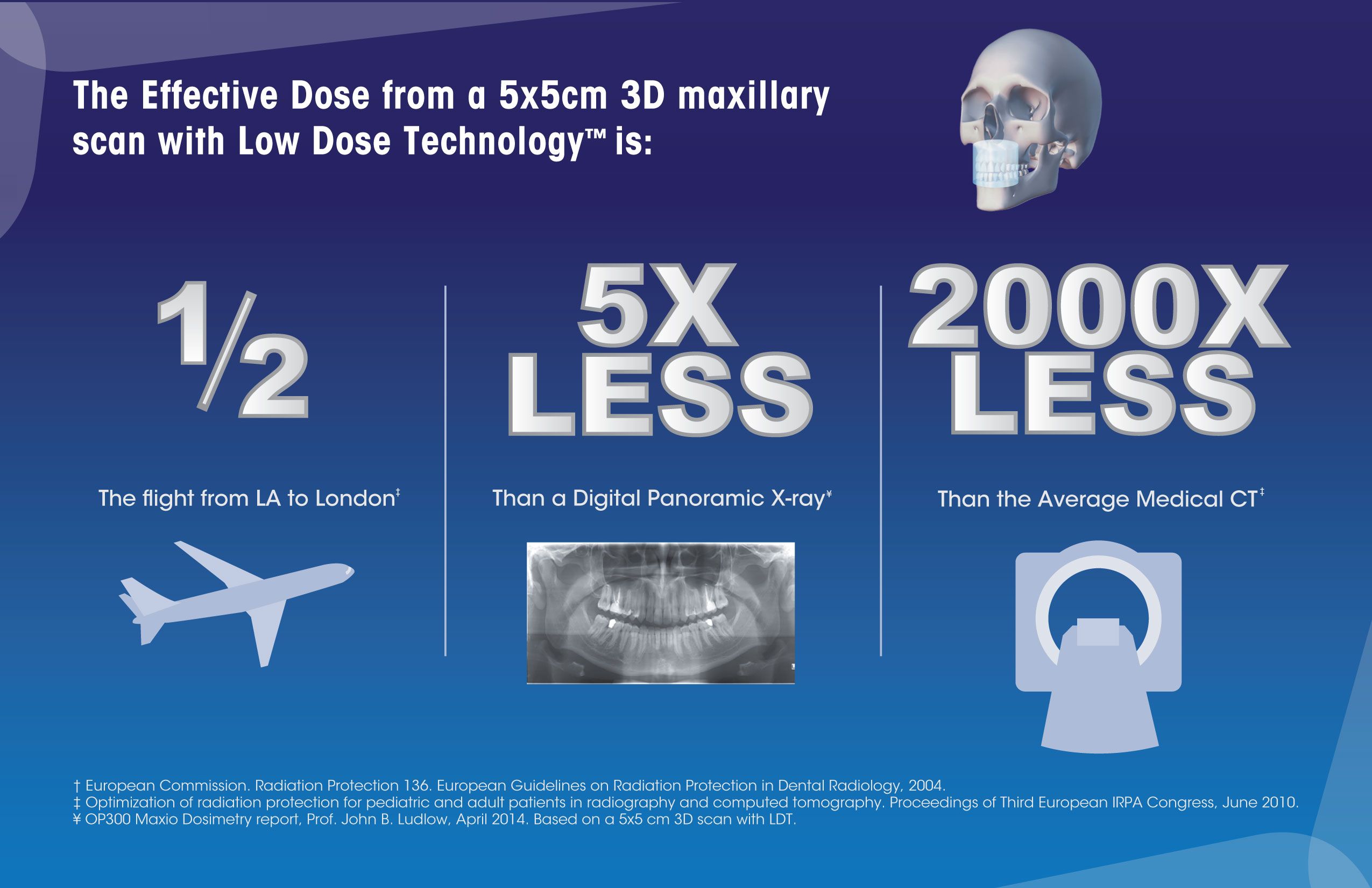Innovator Profile: Instrumentarium OP300 Maxio perfect fit for dental offices
DPR recently sat down with Instrumentarium's Maria Lavonene, Päivi Linteri, Markus Rintamäki, to tell us about how the OP300 Maxio is the perfect fit for modern dental offices. Q: Tell us a little about the R&D process that led to this product launch.
DPR recently sat down with Instrumentarium's Maria Lavonene, Päivi Linteri, Markus Rintamäki, to tell us about how the OP300 Maxio is the perfect fit for modern dental offices.
Q: Tell us a little about the R&D process that led to this product launch.

PL: The OP300 Maxio was the next logical addition to our high-end ORTHOPANTOMOGRAPH® OP300 product platform. The actual OP300 Maxio project started at the beginning of 2013, so it took approximately one year until the system was ready for its market launch.
ML: In our R&D processes, we follow a product management program consisting of six milestones: program kick off, planning, defining specifications, design validation, piloting and project completion. An important, although time-consuming, phase of the R&D process within our industry is the fulfillment of regulatory requirements.
We have very strict procedures to comply with all required regulations as well as testing. Furthermore, we have clinical partners participating in the product development process from the very beginning, giving their valuable feedback from an end-user perspective.

MR: Clinical feedback was especially important to the development of Low Dose Technology™. We also paid special attention to the implementation of a new 3D detector, the development of Automatic Dose Control™(ADC), and on elaborating our new algorithms available on OP300 Maxio.
PL: Additionally, it was important for us to widen the clinical application area, improve image quality and ensure a high degree of usability of the system.
MR: The development process was truly a cross-functional one involving engineers, clinical specialists, product managers, technical writers, operation experts and more. With OP300 Maxio, we implemented a KaVo Kerr Group process called Speed Design Review (SDR). SDR turned out to intensify our way of working; continuous review made it possible to react faster and more efficiently. We will definitely implement the SDR process on future projects.
Q: What are you most proud of with this product?
PL: I am very proud of being able to continue the fine tradition of the ORTHOPANTOMOGRAPH product family. With OP300 Maxio, we were not only able to provide all the renowned ORTHO-PANTOMOGRAPH product features, such as stable patient positioning, but also introduce new ones like Automatic Dose Control for panoramic modality or the additional 3D fields-of-view.
MR: For me, as an R&D engineer, the further improvement in image quality is a great source of pride. In addition, I am proud of being able to implement Low Dose Technology and contribute to enhance the usability features.
Click here to keep reading about how the OP300 Maxio fits into high-tech dental practices...
Q: What makes OP300 Maxio special?
PL: Excellent image quality, high degree of usability, and the system’s agility to be applied to a wide variety of clinical needs.
Q: How does this new imaging system fit into high-tech dental practices?
PL: Progressive, modern dental offices are the perfect fit for OP300 Maxio. The unit provides users with great usability, reliable patient positioning, free 3D field-of-view positioning and multilayer panoramic imaging – just to name a few winning qualities.
MR: It is a perfect match – with its large 3D FOV, OP300 Maxio is able to serve a wider range of applications and specialties, from small, targeted high-resolution scans for endodontic cases to views capturing the entire maxillofacial region for facial surgery procedures.
Check out this video on the ORTHOPANTOMOGRAPH® OP300 Maxio ...
Q: What kind of feedback did you get from your clinical test sites and did the feedback lead to any changes or improvements?
PL: It was extremely exciting to wait for clinical feedback, and honestly, it exceeded all our expectations. Comments from clinical experts were overwhelmingly positive. It was like a storm of applause.
MR: Usability of the system was appreciated a lot. We were able to further improve image quality thanks to the test site feedback.
Q: What were the biggest challenges during the project?
MR: Time is always a challenge. Our ambition was to create a system with the highest possible versatility and performance. Integrating new, advanced features into one seamless package within a given time frame was an exciting challenge. A significant help that guided the process was the input gathered among our end-users and clinical experts.
Q: What are your expectations for OP300 Maxio sales?
ML: We are absolutely thrilled about OP300 Maxio and we strongly believe that this system will establish its position as one of the most desired imaging systems.

ORTHOPANTOMOGRAPH® / Low Dose Technology/Automated Dose Control is a registered trademark/a common law trademark of Instrumentarium Dental, PaloDEx Group Oy.
Click here to keep reading about the great features of OP300 Maxio ...
Instrumentarium OP300 Maxio allows you to...
... Evaluate Airway in Just Seconds
Instrumentarium’s ability to provide complete freedom in positioning 3D fields-of-view (FOV) makes it possible to acquire dedicated views of the airway even with a focused 6x8 cm FOV. In addition, the 8x15 cm and 13x15 cm FOVs provide a view of the dentition and airways within the same scan.
With a few mouse clicks, Instrumentarium software makes it easy to select the airway. Once its powerful algorithms take over, the software performs a volumetric assessment of the airway in just seconds. The result is a clear, color-coded mapping of the patient’s airway providing helpful information for the diagnosis and treatment of sleep apnea conditions.
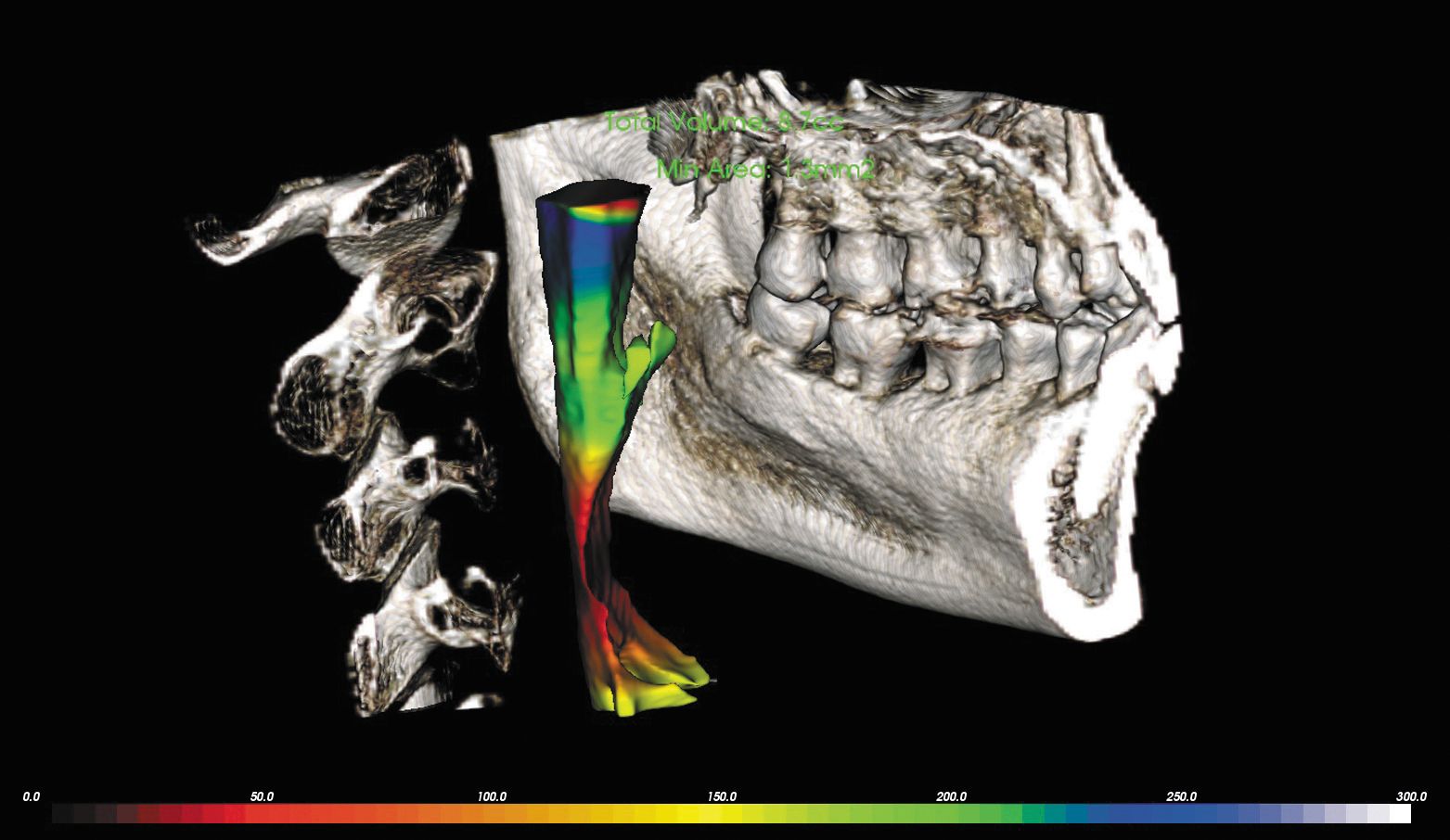
… Identify Root Fractures
OP300 Maxio features a high-resolution modality to take highly detailed 5x5 cm 3D scans, the ideal support for the most complex endodontic cases. OP300 Maxio helps visualize small anatomical details like fractures and endodontic root fillings.
In addition the Metal Artifact Reduction (MAR) technology reduces the amount of glare produces by metal or opaque objects producing crisp views of the anatomical region of interest.
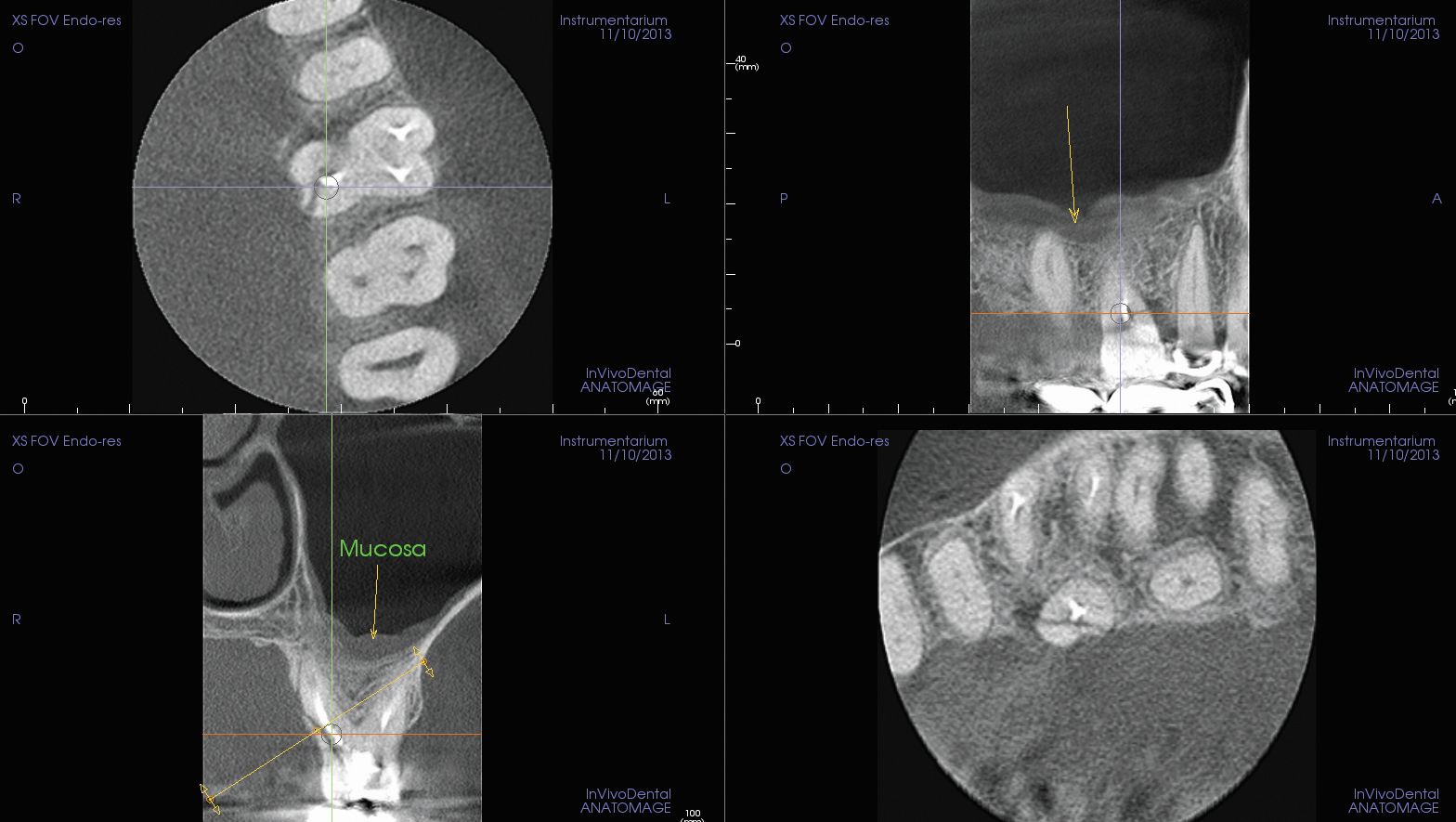
Click here to keep reading about what the OP300 Maxio allows providers to do...
... Make implant planning predictable and stress-free.
OP300 Maxio scans provide clinical-rich information to assist clinicians in the treatment planning process. The feature-rich 3D software enhances the data and gives you full control to design crowns, abutments and implants right from your Cone Beam 3D scan for fast, accurate treatment planning and predictable results. In just three simple steps, the software allows you to implant plan from the crown down:
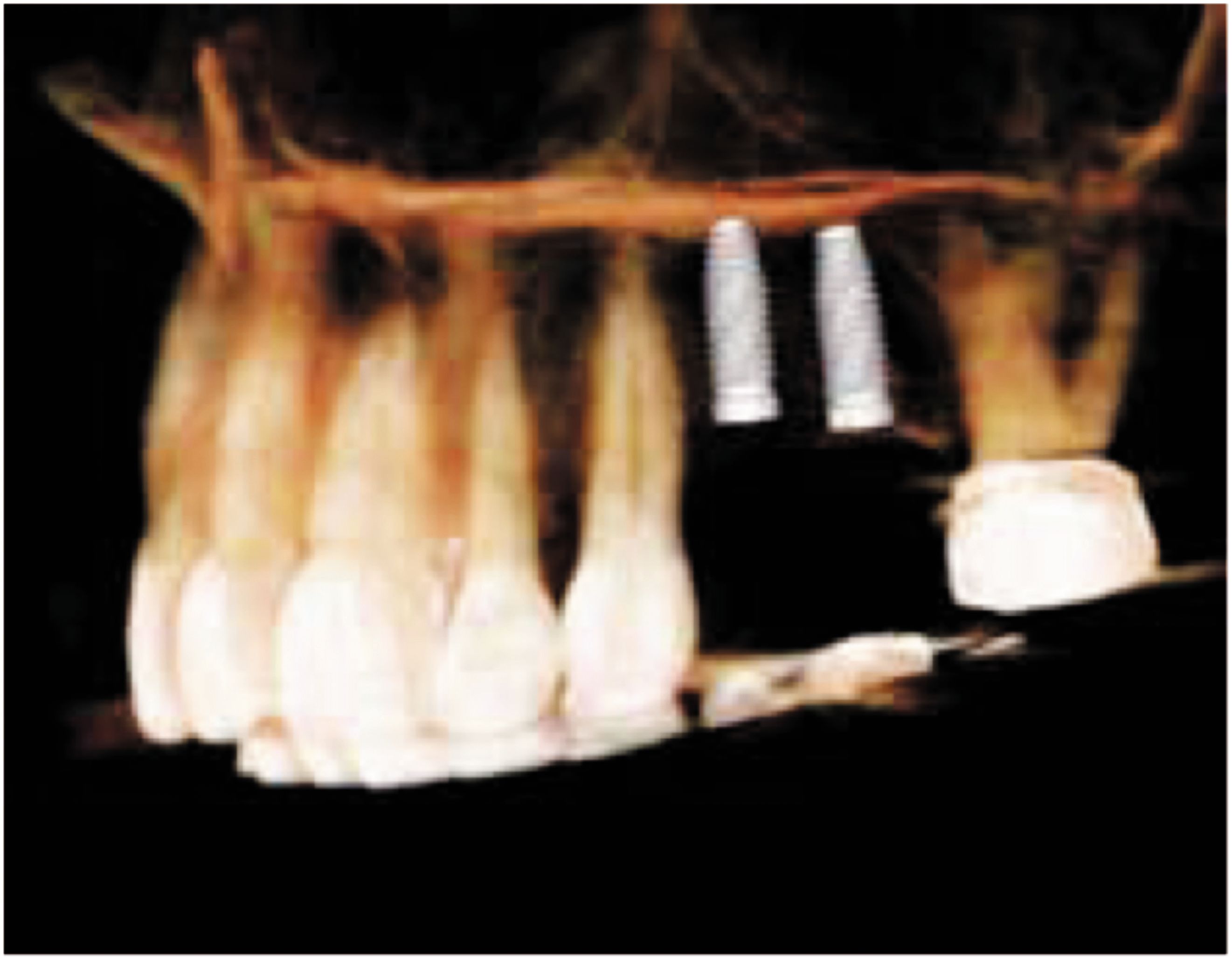
1. OP300 Maxio software gives the ability to adjust and size the implant directly within the 3D rendering making the entire implant selection and positioning process a breeze.
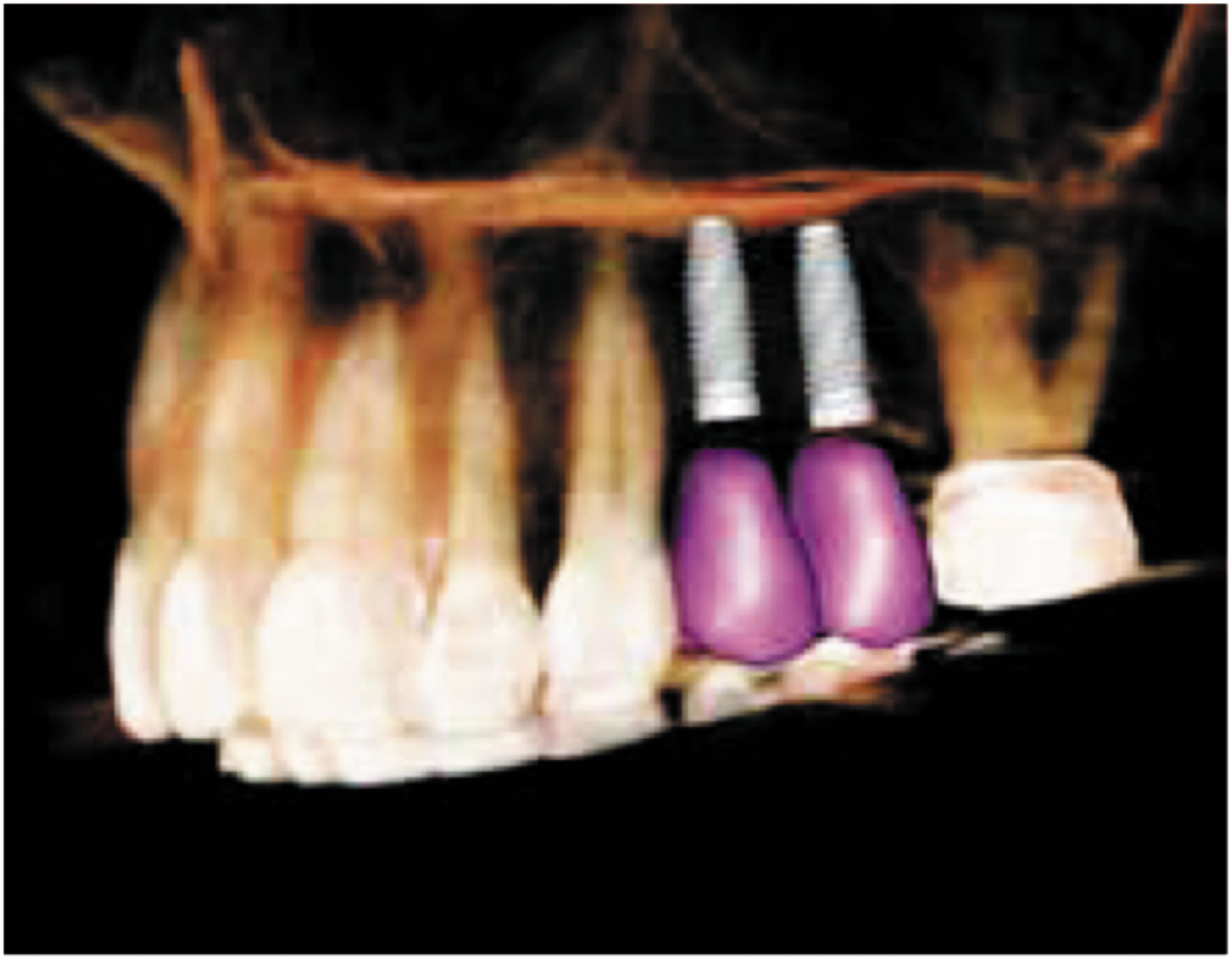
2. Virtually add crowns from the restoration library and plan them within the 3D scan. With a few clicks of the mouse, you can also design your restoration to meet the functional requirements of your treatment plan.
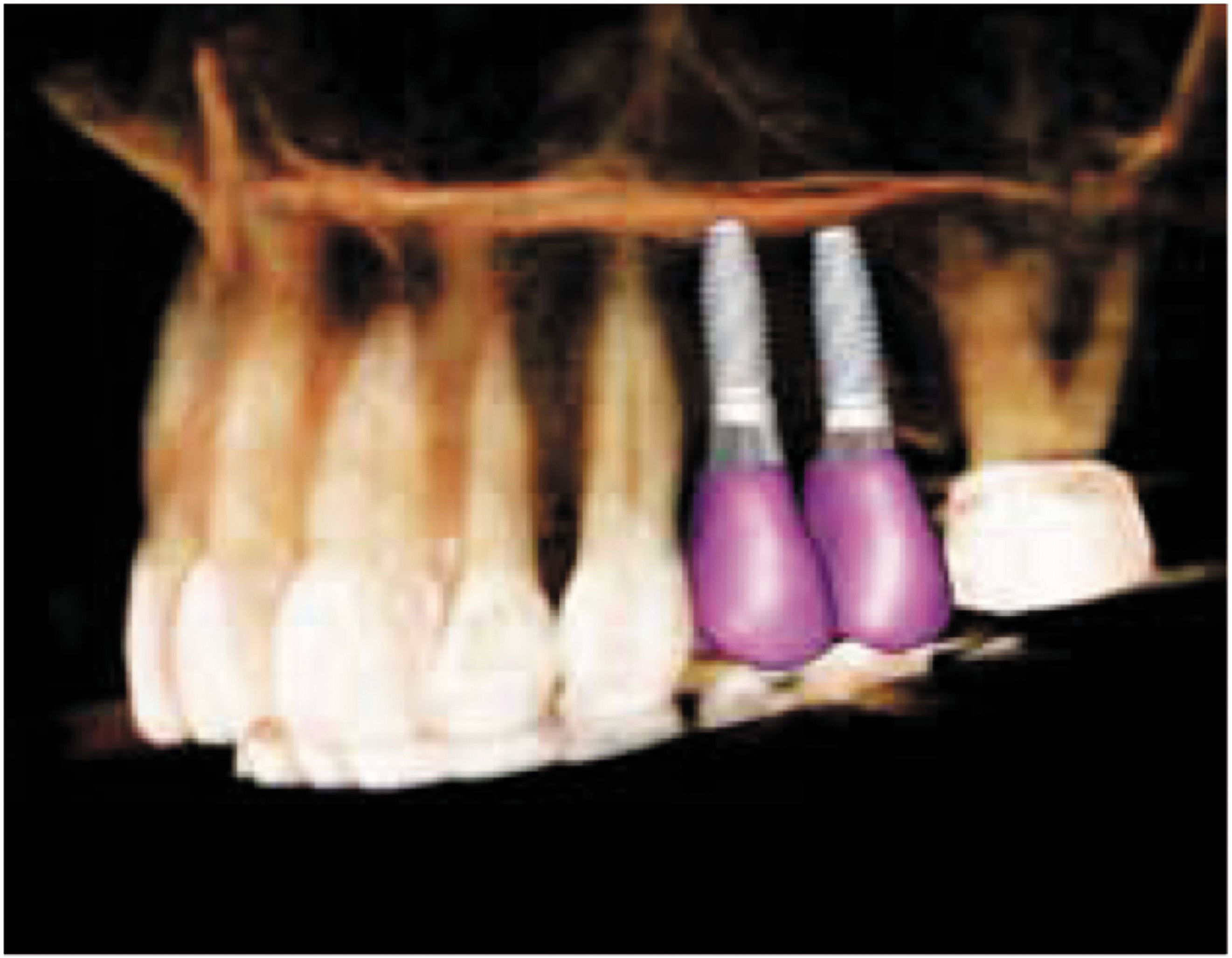
3. Complete the design by adding the abutment and make any final adjustments quickly and accurately. This will allow you to refine and verify the implant selection and placement in respect to the restoration.
Once your design is complete, just select to transfer the case to the cloud server to have high-quality surgical guides made by Anatomage. With a fast turnaround, the guides will be produced in California at a flat fee independent from the number of implants or the complexity of the design.
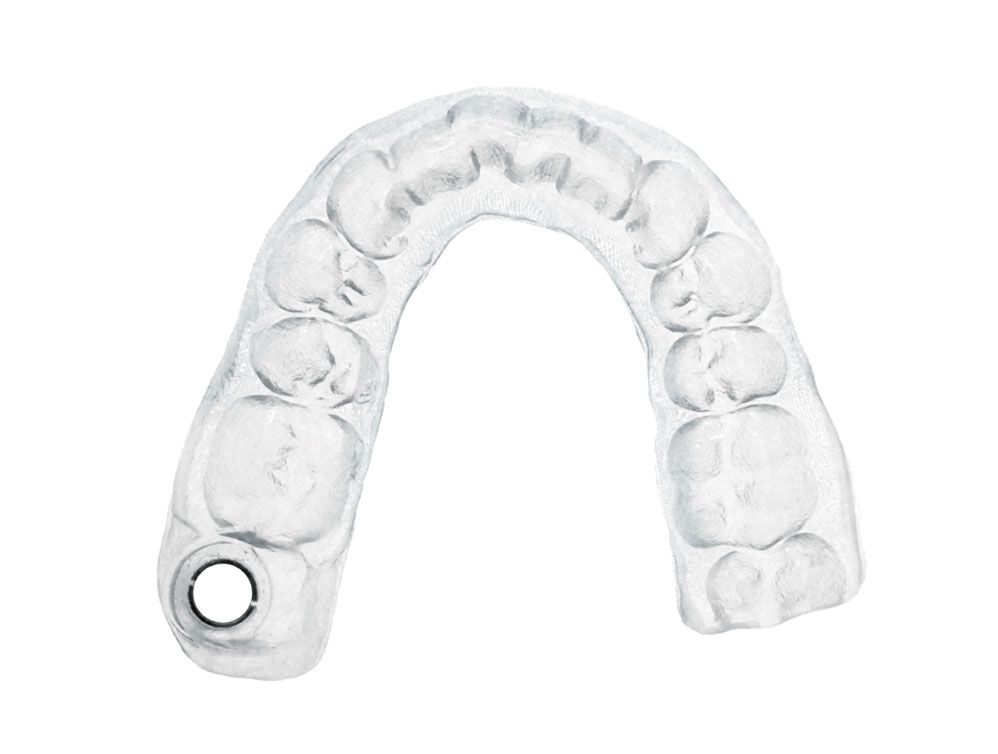
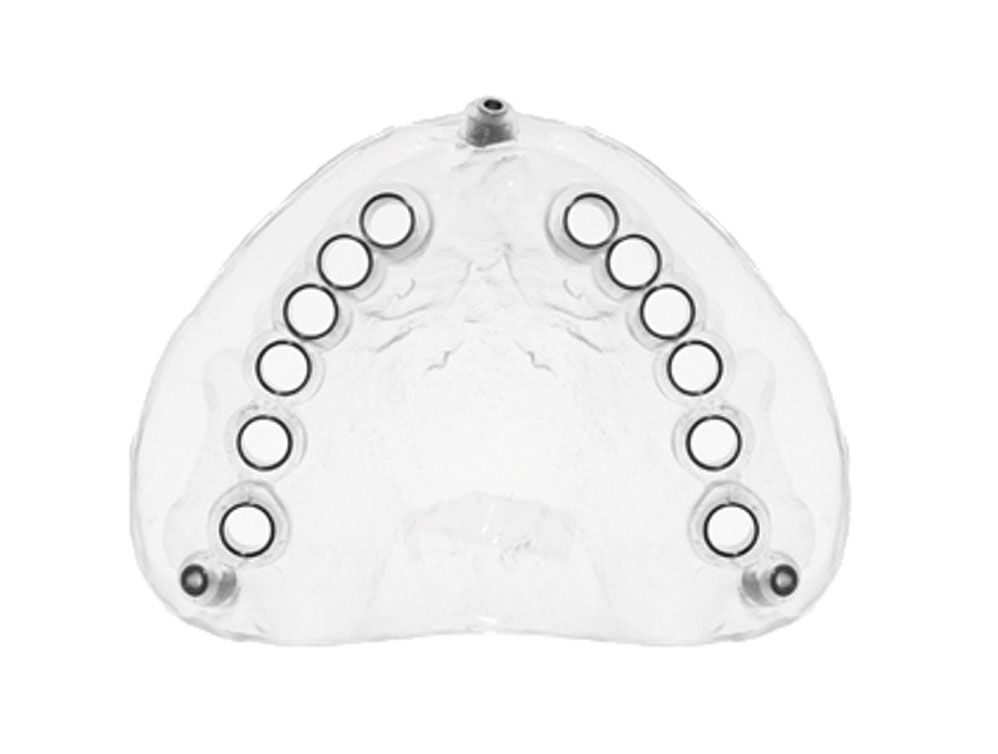
Predictable, efficient implant planningHigh-quality surgical guides are produced at the same flat fee independent from the number of implants or complexity of the case
Click here to learn more about how OP300 Maxio provides solutions for dose-sensitive applications...
OP300 Maxio’s Low Dose Technology provides solutions for dose-sensitive applications

Q: What are the challenges of low dose imaging? And how does the new OP300 Maxio’s Low Dose Technology addresses them?
DW: Traditionally, reductions in dose meant compromising image quality and, therefore, resulted in the potential loss of important diagnostic information. Through hard research and methodic investigation, our team was able to determine the right balance of exposure factors such as kV, mA, exposure time, and reconstruction algorithms to dramatically lower radiation dose provided to patients while offering quality-optimized, clinically rich scans.
The new Low Dose Technology acquisition modality offered by the OP300 Maxio is ideal for dose-sensitive applications like younger patients, third molar extractions, impacted canines, or implant planning treatments – to name a few.
Q: Which other tools does OP300 Maxio provide to better control exposure from ionizing radiation?
DW: First of all, OP300 Maxio offers a selection of up to five 3D field-of-views from 5x5 cm to 13x15 cm. This allows practitioners to focus 3D scans on the specific region of interest and limit adjacent tissues to exposure.
In addition, Instrumentarium patented Automatic Dose Control technology for panoramic acquisition intelligently adjusts exposure factors to provide just the right dose. All it takes for the operator is to select Automatic Dose Control, and OP300 Maxio dynamically optimizes the X-rays exposure to best fit the specific patient.
